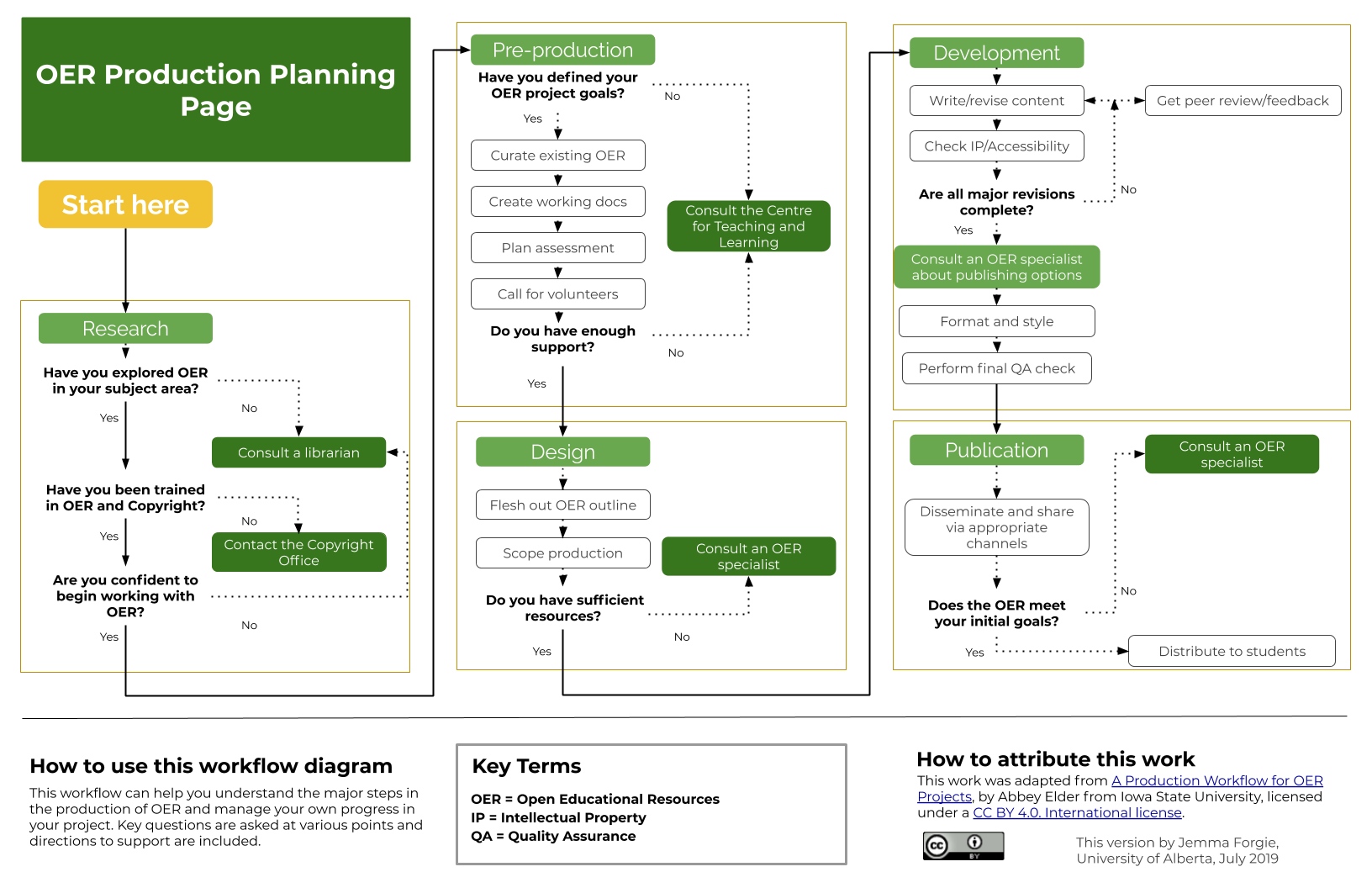Planning and Completing Your OER Project
Learning Objectives
By the end of this chapter, you will be able to:
- Identify the 5 main steps of the OER creation process
Each OER project is different, and rarely is an OER adoption a turn-key process. While OER textbooks exist for many high-enrollment courses, the pedagogical design (or teaching style) and student population will vary.[1]
OER PRODUCTION FRAMEWORK
The following OER production framework, based on an instructional design framework, depicts the major steps that OER adoptions typically go through:

You can see the full Project Production Workflow on Google Drawings.
Priming phase
This step is all about gauging your knowledge and experience with OER. Consider whether or not you have explored OER in your subject area before. Prior to planning the creation of a new OER, ensure that you have looked into other subject-specific OER to see if there are any that may be adapted to fit your needs– this may save you a lot of time in the future. If this is your first experience with OER, look into any workshops, training, or on-campus specialists that can help you with basic OER training.
Pre-production phase
Planning is a vital part of creating a successful OER. Making a general timeline and design for the workflow of the project is important to ensure that you stay on track and have a realistic idea of how long OER creation and adoption may take. At this phase, ensure that you are simply planning. No new content should be created. This is also a great time to schedule an OER consultation with on-campus specialists, such as the Centre for Teaching and Learning at the U of A.
Design phase
This step follows very closely to the pre-production phase. It focusses on adapting existing OER to fit your project, and fleshing out project outlines and creating loose skeletons of any additional documents that may be created. The creation of visuals and graphics requiring assistance from instructional designers should also be included in this phase of production.
Development phase
If you are creating new OER, this phase will likely be the most time-intensive, as it is in this phase that you will begin building new materials. If you are simply adapting existing OER, this phase may just involve the creation of instructional documents to accompany your adapted resource. As well as building new materials, this phase also involves the editing and revision of new and existing resources. Ensure you are also checking you have appropriately attributed all outside resources that have been used, and that you have made content as accessible as possible.
New content may be drafted in platforms such as Google Docs or Word, before being exported onto open platforms for dissemination, such as Pressbooks.
Publishing phase
The final phase involves publishing and sharing the content that has been created. This includes creating export versions, archiving editable files for instructors who might wish to edit your work (.doc, .xml, etc), and depositing any ancillary materials such as syllabi or lesson plans in the institutional Digital Repository. The new adapted or original OER content is then disseminated to learners and shared with the open community.
- Planning & Completing your OER Project was adapted from Scoping an OER Project by Billy Meinke, licensed CC BY 4.0. ↵

